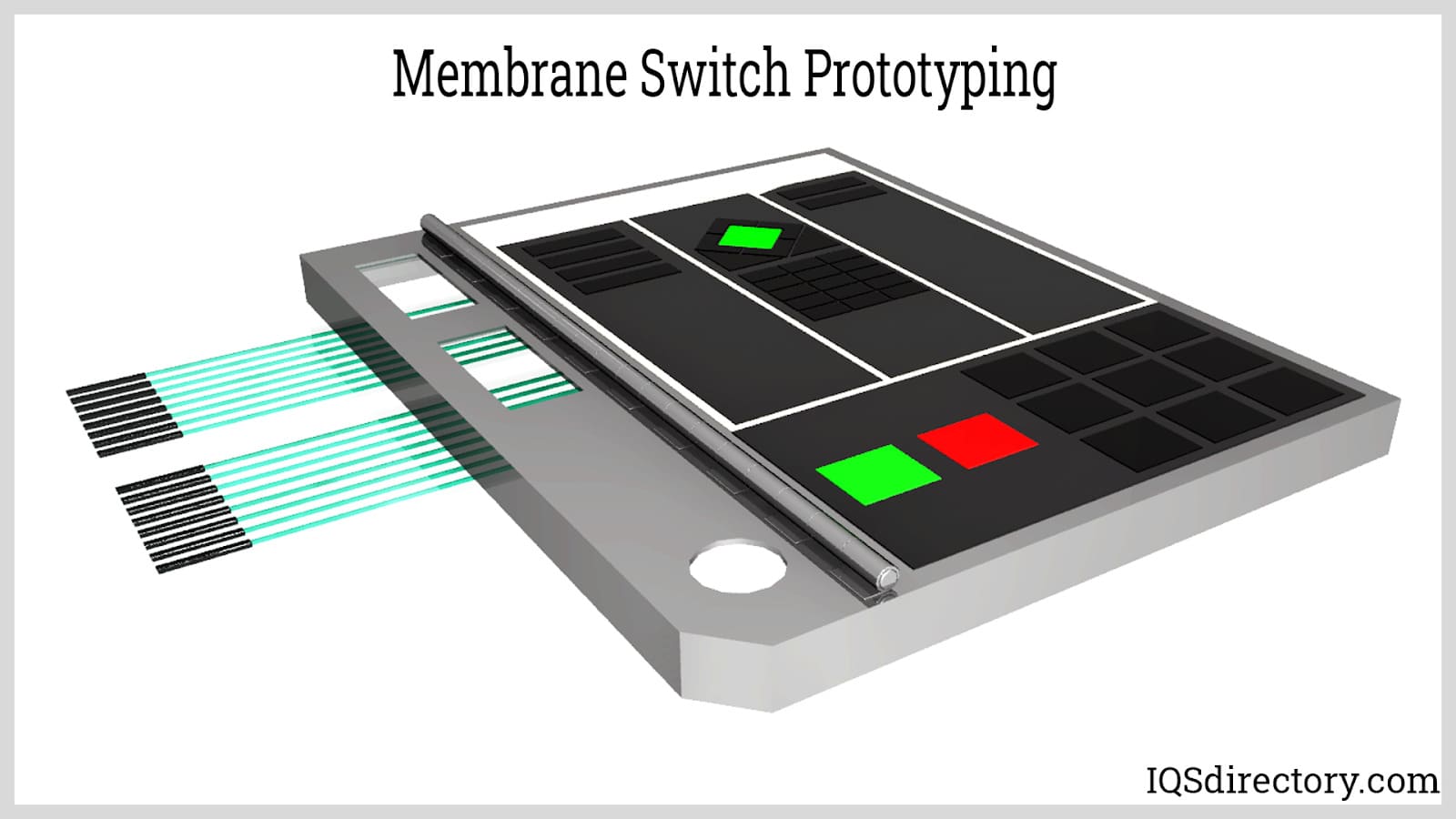Exactly How a Membrane Switch Boosts Customer Experience and Tool Performance
Exactly How a Membrane Switch Boosts Customer Experience and Tool Performance
Blog Article
How Membrane Switches Over Contribute to the Durability of Electronic Control Panels
Membrane buttons play a crucial function in enhancing the longevity of electronic control panels, mainly with their multi-layered building which provides effective security against ecological variables such as dampness and dirt. The lack of moving components dramatically lowers the chance of mechanical failings, making membrane switches over suitable for requiring applications.
Meaning of Membrane Switches

Membrane buttons are developed to be slim and light-weight, making them appropriate for applications where room is limited. They can be manufactured in various forms, dimensions, and colors, offering flexibility in style that satisfies visual and useful demands. In addition, membrane switches can incorporate numerous innovations, such as responsive responses and LED indications, boosting user experience.
Because of their building, membrane buttons are often resistant to dust, wetness, and basic wear, adding to their toughness in demanding environments. Their seamless layout not just assists in simple cleansing however likewise lessens the risk of mechanical failing, making them a favored option for makers seeking dependable interface in their digital control panels.
Security Versus Ecological Aspects
The design of membrane layer changes inherently provides a level of security against different environmental factors, which is vital for preserving functionality in challenging problems - Membrane Switch. These switches are typically constructed with layers of versatile materials that shield internal parts from wetness, dirt, and contaminants. By encapsulating the wiring, membrane switches over lessen the risk of short circuits and corrosion, which can substantially impair performance
Moreover, using durable adhesives and sealants throughout production enhances their resistance to environmental challenges. Membrane buttons can endure direct exposure to chemicals and solvents, making them ideal for markets such as food handling and health care, where health and tidiness are critical. Their seamless surface area style also stops the accumulation of dirt and germs, helping with simpler cleansing and maintenance.
Temperature changes are one more environmental concern, and membrane buttons are crafted to work properly throughout a large range of temperature levels (Membrane Switch). This versatility makes certain that control board remain functional in numerous settings, from industrial environments to consumer electronic devices
Impact on Customer Communication
Customer interaction with digital control panels is significantly influenced by the layout and performance of membrane layer buttons. These switches supply dig this a responsive user interface that helpful resources improves the total customer experience, enabling intuitive navigation and control. Their responsive nature makes certain that users obtain instant responses upon activation, which is crucial for tasks requiring accuracy and effectiveness.
In addition, the smooth surface area of membrane layer switches over promotes simple cleansing and upkeep, advertising customer self-confidence in the dependability of the interface. This cleanliness is especially essential in settings where hygiene is paramount, such as medical or food handling setups. In addition, the portable and light-weight style of membrane changes adds to the aesthetic charm of control panels, urging user interaction with a contemporary and smooth look.
Furthermore, the combination of aesthetic elements, such as printed symbols and backlighting, helps customers quickly identify functions, decreasing the finding out contour linked with new devices. Because of this, users can operate gadgets better, bring about enhanced performance and fulfillment. In summary, membrane buttons play an essential role in boosting user communication by integrating capability, appearances, and simplicity of usage, ultimately resulting in improved functional performance.
Design Flexibility and Customization
Layout flexibility and personalization are important aspects of membrane layer switches, making it possible for producers to customize electronic control board to certain applications and individual needs. This flexibility permits the integration of numerous layout aspects, such as shades, graphics, and appearances, which can improve the aesthetic appeal and individual interaction of the control like it board.
Membrane buttons can be tailored in shapes and size, suiting a vast array of gadgets and applications, from commercial equipment to consumer electronics. This adaptability ensures that manufacturers can produce user-friendly user interfaces that straighten with individual expectations and operational requirements. Furthermore, the capacity to incorporate distinct functions such as backlighting or tactile comments further enhances usability, enabling a much more interactive experience.
Furthermore, the production process for membrane switches over sustains the quick prototyping of designs, enabling makers to iterate and fine-tune their concepts rapidly. This ability not only speeds up the advancement timeline however also guarantees that the final product meets details useful and visual criteria.

Cost-Effectiveness and Long Life
Cost-effectiveness and longevity are substantial benefits of membrane switches, making them an appealing option for manufacturers and end-users alike. These buttons are commonly cheaper to create than standard mechanical switches, largely as a result of their streamlined production procedures and the decreased number of components needed. This cost advantage expands not only to initial production but likewise to long-lasting operational expenditures, as membrane buttons usually need less upkeep and have a lower failing rate.
Moreover, the long life of membrane changes contributes to their total value. Built from sturdy products, they are resistant to environmental elements such as wetness, dust, and chemicals, which can cause premature wear in various other button types. The lack of moving components lessens mechanical failing, permitting membrane changes to keep capability over extended durations.
This toughness is specifically useful in applications calling for consistent efficiency under demanding conditions, such as clinical tools and industrial devices. Inevitably, the combination of cost-effectiveness and long life makes membrane switches over an economically feasible selection for producers, supplying trustworthy services that hold up against the test of time while enhancing financial considerations.
Verdict
In final thought, membrane buttons significantly enhance the longevity of digital control panels with their robust construction and protective attributes - Membrane Switch. Overall, membrane switches represent a reliable and cost-efficient option for improving the durability and functionality of digital control systems.
Report this page